Legends of Runeterra Fundamentals: Swing Slots
There’s been a lot of discourse lately out there about innovation versus honing.
I’m still not entirely convinced that they aren’t the same thing, but we’ll leave that particular argument for its own article. Instead let’s look at the second half of deckbuilding, those last couple of cards that take more effort than the first thirty.
I’m Jordan, “WhatAmI” Abronson, and this one goes out to the homies- I mean the hone-ers.
People who see something being done well and can’t stop themselves from asking “How can we do this better?” Today let’s talk about our swing slots.
Swing Slots
The first question obviously is “What is a swing slot?” Qualitatively, a swing slot generally means any card that doesn’t feel “locked in” to a deck archetype.
It’s a card that you don’t look at and say “This has to be in here for this deck to count as the archetype that I am trying to represent.”
For a more quantitative approach though I’ve always found this concept easiest to understand by defining what it isn’t.
These are the cards that lie outside either the “accepted” or “radical” cores of the deck, depending on how far you are willing to reach. Let’s look at a few examples.
Lurk (Accepted) 38 Cards
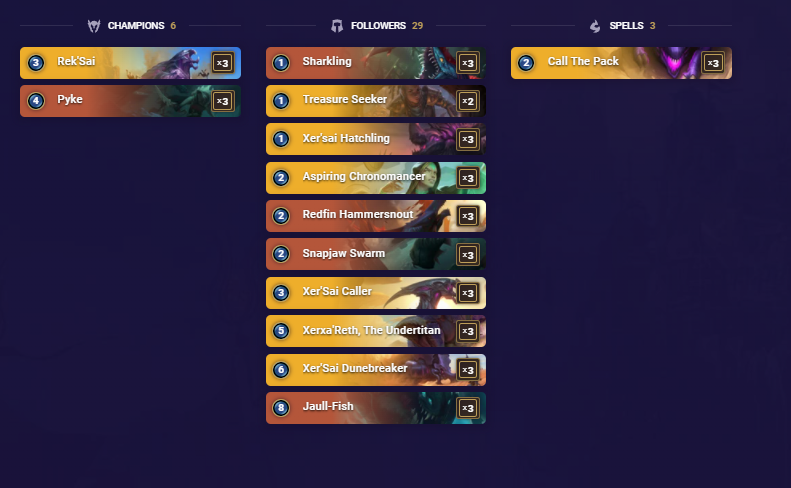
Deck Code: CEBAKBAGAEBQKBYPA4CAOAITCZAUISSQAEAQIBZWAA
The accepted core of the Lurk deck leaves room for only a very few swing slots. This is because of the immense amount of Focus that needs to be in play for Lurk to consistently trigger. However…
Lurk (Radical)
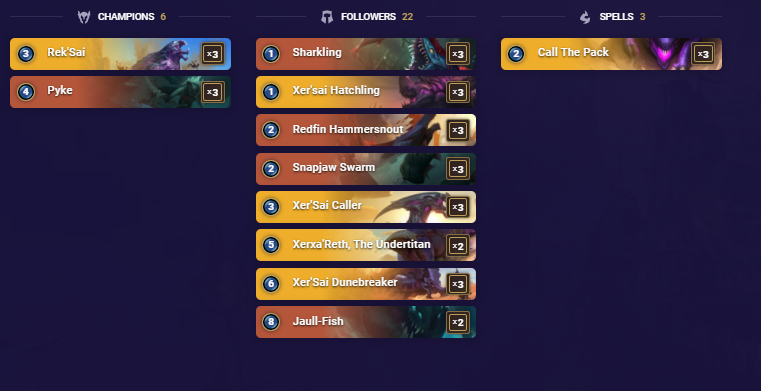
Deck Code: CEBAIBAGAEBQKDYFAQDRGFSEJJIAEAIEA5AQCBAGA4AA
…If we’re willing to go a little crazy though, we can eke a few more out even from this “pre-built” archetype.
Looking at swing slots from the radical core of a deck walks the fine line between honing and innovation. Let’s check out a looser deck with fewer required parts for our second example.
Warlord Sivir (Accepted) 30 Cards
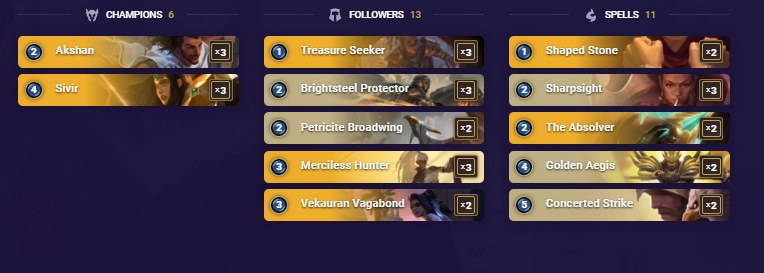
Deck Code: CEBQIBAHCQ3GPAQBAEAQACIBAMAA4BADAQDV3AABRIAQCBIABQAQIAACAEBAAAIA
Here we can see that even within a relatively tight definition of core we are still missing quite a few cards. Whatever we put into these slots will have a huge impact on how our matches play out.
Some amount of five drops is almost always core, but given that we don’t know what they will be, they fit into the definition of a swing slot. Ten cards is a full quarter of your deck and give plenty of room for decision-making.
Warlord Sivir (Radical) 21 Cards

Deck Code: CEBQGBAHCQ3IEAIBAEAASAIDAAHAEAIEA5TQCBAAAIAQEBAHLWFAC
At this point, we are almost building an entire deck. I’ve used Lurk and Sivir as our two examples to demonstrate the variability in the number of swing slots decks can have.
These are extreme examples and there are plenty of decks that lie comfortably in the middle ground.
So now that we know how to identify what our swing slots are in any given archetype, we get to ask the fun question. What defines how we should use them?
I can answer that question with a single word my friends, Meta. (Insert ominous music and maniacal cackling here).
Targeting a Metagame
Look, we live in a metagame folks, there’s no denying it. Whether you are on ladder or in a tournament setting there are certain decks at different times that will have higher and lower power levels. The first question you need to ask when attempting to target is “Are we in a wide or narrow meta?”
Are the most played three to five archetypes making up a huge percentage of the matches you’ll play, or is there a bunch of random nonsense flying around? The wider the metagame is, the more I would encourage you to stick to an accepted form of a given deck.
Conversely the shallower a metagame, the more we can depart from whatever our own base level game plan is to directly counter it. Remember that every time we change something we are giving something up, so whatever we are managing to put into these swing slots had better be worth it.
Example: Warlord Sivir
I’m going to use Warlord Sivir as my first example here as I have been playing quite a bit of it on ladder recently. We have quite a wide metagame right now, so I am inclined to start with the accepted version of this archetype and build out from there. That means I have ten swing slots.
For my current version, my vision was to be as solid as possible into control decks. Taking curve considerations into account I want to get a couple of five drops in here so we start with the most anti-control of all the possible slot-ins, Ruin Runner. Spellshield Overwhelm gets the job done, what can I say.
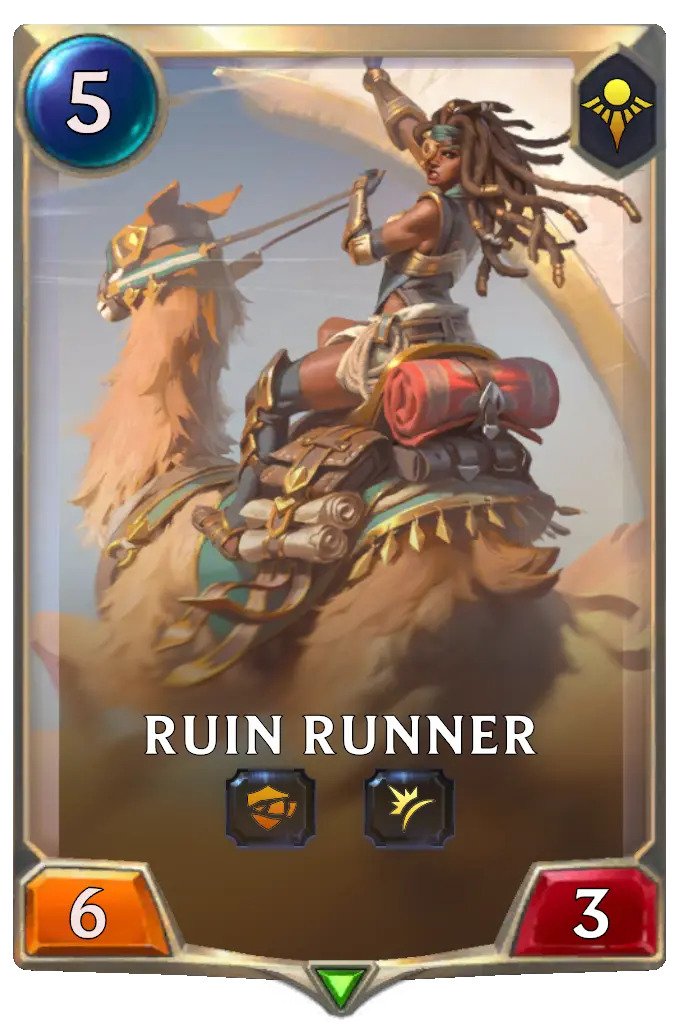
Then because we want to not run out of gas in those mid-long length games we slot in Preservarium and Vanguard Sergeant. For Demacia is not to be underestimated.
Looking at the wider metagame having a little more interaction can help out a ton into matchups like Scouts or Gnar piles, so the third Concerted Strike and a one of Cataclysm make the cut. Coincidentally, also very good for removing a pesky Veigar or Senna before it runs away with the game.

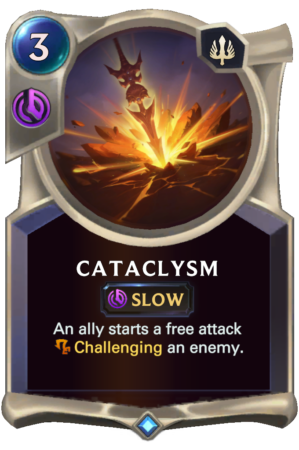
Lastly, I wanted something that would give me an additional edge against pesky Bandle Trees. And you know what Bandle Tree does not do well? Block Fearsome. So in comes Cithria the Bold to save the day. Also, coincidentally, she has excellent combo power with a leveled Sivir, giving herself Fearsome.

This still left one slot though, so the question I needed to ask was, “What is the thing I want to focus on the most?” And as the answer was still control, the one of Rite of Negation found its way into the deck. This was also a response to one too many Buried in Ice getting cast on my poor unsuspecting units.
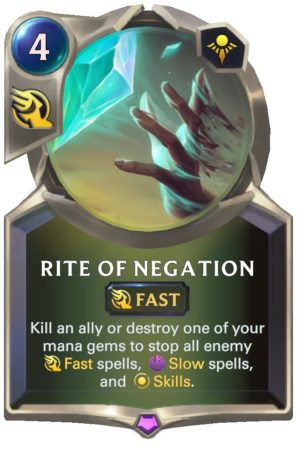
The final list, that I have been enjoying both on ladder and in tournaments is as follows.
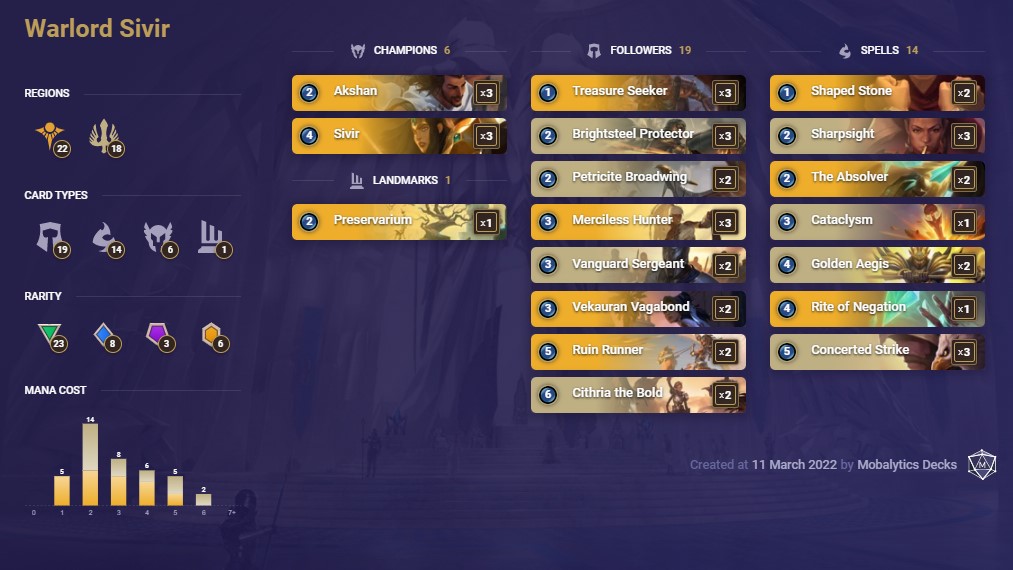
Deck Code: CECAIBAHCQ3GPAQBAEAQACIBAMAA4AICAAAQIBAEA43V3AABRIAQCBIABQBACAAGGMAQIAACAIBAIBYNHMAQIAAD
[See Warlord Sivir deck details]
But here’s the thing to realize. That’s only based on one extremely specific set of criteria. If I was looking to fight against aggro we might have more early game units and Radiant Guardians making an appearance. Midrange mirrors might bring Vekauren Bruiser to the forefront, and so on ad infinitum.
If we were in a more focused metagame perhaps, and everyone was on combo, I could even slim down the deck and play a slew of one drops to blow my opponents away. The radical core of this deck gives me a crazy number of options. Maybe I’m suddenly just a rally aggro deck today. Scouts 2.0.
The point I am trying to make is that the best way to utilize your swing slots to arrive at the best version of a given deck will constantly shift. The only way to maximize the potential of your deck is to ask each time you enter a tournament or each new week when on ladder “What am I playing against today?”
Once you’re willing to do that, you’ll find that even for “established” decks, the variety that you can put in them is much larger than you’d expect. Again, not that “Net-decking,” is bad, established lists are established for a reason, but nothing is ever perfect, and you can always find new ways to crush your competition.
If you have any questions, feel free to ask WhatAmI during his streams (Tuesday-Thursday around 3PM PST and weekends for tournaments).
WhatAmI streams at twitch.tv/xxwhatamixx Tuesday-Thursday
Subscribe to our newsletter:
Don’t miss out on all of the latest LoR content!
 Download APP
Download APP